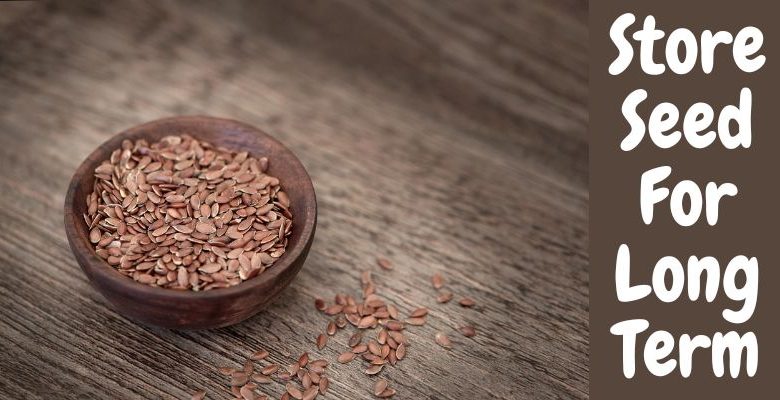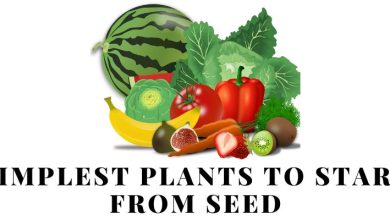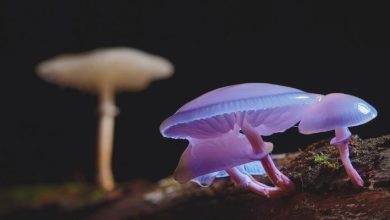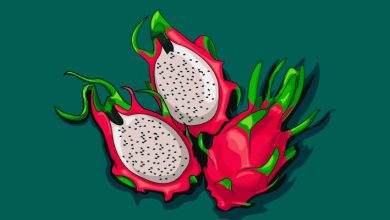
You can preserve seeds for as long as feasible whether you’ve saved your own seeds from the vegetable garden or bought high-quality seeds. Here are some suggestions for effectively keeping garden seeds in the best shape for long-term storage.
The Problem with Improper Seed Storage
We’ve all done it: Over the winter, we save any extra seeds because we gardeners are notoriously frugal people. We eagerly place them as spring approaches, looking forward to the emergence of sprouts. And still, we watch.
Finally, we come to the disappointing conclusion that the seeds we preserved seem to be a waste of time, and the anticipated garden season gets off to a disappointing start.
Here are some tips to help you properly care for those seeds you value so highly, ensuring that they not only last as long as possible but also store their finest quality for successful spring planting. (Or at least we can rule out seed quality as the cause of loss!)
Start with seeds that are entirely dry
The significance of beginning with dry seeds cannot be emphasized enough!
For instance, cilantro (coriander) is one of my best seeds to save, but I never harvest the seeds until a few days after a rain, and then I let them dry out for up to a month before I store them. Excessive temperature and excessive moisture are the two biggest enemies of stored seeds.
Therefore, if you have preserved your own seeds, make sure they are completely dry before storing them.
The Ideal Situations for Seed Storage
Seeds should be stored in airtight receptacles, which can be made of glass, metal, or plastic. I keep my seedlings in large, airtight plastic containers in seed envelopes. Mason barrels are another item I like to use, but I don’t feel as confident using them when I’m outside planting. I’m constantly concerned that I’ll lose something in the garden and break glass!
In order to protect my seed-saving receptacles from moisture, I also save the silica gel packets that come in shoe boxes and vitamin bottles. If you don’t already have any of these items on hand, they are cheap to buy and have a long lifespan.
Seeds should be kept in a cupboard or another dry, dark, and reliably cool area. In the dim cellar, I keep my seeds.
Saving Seeds for Long-Term Storage in the Freezer
Consider freezing (completely dry) seeds in a glass jar for long-term storage if you don’t have access to a cellar or storage space with stable temperatures. The second-best option is the refrigerator because of its inconsistent temps.
How to Retrieve Seeds from a Refrigerator or Freezer
This step is crucial for maintaining the seeds’ integrity!
To retrieve seeds for use from the freezer:
- To allow the jar to come to room temperature, leave it out on a kitchen counter or shelf for 12 hours. By doing this, dampness won’t collect on the seeds. (Remember: the first adversary is moisture.)
- Open the top of the container and let the seeds air out for a few days prior to planting.
Avoid transferring seeds more than once from the freezer to room temperature because each movement will lessen their viability.
Make Sure You Can Find & Use Those Well-Stored Seeds When Organizing Seeds!
By using a system to keep your seeds organized, you can keep track of the seeds you already have and avoid purchasing more. In order to use older seeds first and compost expired seeds rather than sow them, it can also help you keep track of your seeds by age.
An origination date, or the date the seeds were gathered, is printed on each seed package. This number can help you quickly sort through seed packets and categorize them by year if you need to (if you gather your own seeds, be sure to date your own packets!).
I like to arrange seeds in a Mason jar-style arrangement and a card catalog arrangement. Your choice of storage organization will be heavily influenced by your lifestyle and surroundings, but regardless of the design you go with, make sure the seeds are kept dry and cool by an airtight solution.
Do not neglect your packets of silica gel!
How to Arrange Seeds in a Card Catalog
Do you have enough experience to recall library card catalogs? Utilize a rectangular airtight receptacle deep enough to accommodate seed packets being stored upright. Make certain the cover fits snugly when it is filled. The fact that all the seed packets are kept together in one or two containers makes this technique my favorite.
Dividers can make it even easier for you to locate things. Older seeds are used first because they can be categorized according to the period of their origin.

Keeping Garden Seeds in the Best Condition for Long-Term Storage: Here are some suggestions for effectively keeping garden seeds in the best condition for long-term storage.
A plastic shoe box can be converted into a seed organization box in the manner of a card catalog.
Using Mason jars to organize seeds
You can keep seeds in more compact quantities using mason jars. To ensure the viability of short-lived seeds until the following growing season, you could, for instance, store them in the freezer. Longer-lived seeds, on the other hand, might be acceptable to store in a cupboard or under the bed.
Your storage requirements and the number of seeds you’re keeping will determine how you arrange your Mason jars. If you adore tomatoes, combine all of your different varieties in a single Mason jar.
Or try creating themed flowers in Mason jars (they make wonderful presents!). One container would work well for storing seeds for a spring garden, a salad garden, or a salsa garden.
Keeping Garden Seeds in the Best Condition for Long-Term Storage: Here are some suggestions for effectively keeping garden seeds in the best condition for long-term storage.
This gallon-sized Mason jar holds all of my lettuce seed types.
No matter how you arrange your seeds, be careful to record the dates of their creation.
Variety viability
Their germination rate gradually decreases as seeds get older. All seeds will remain viable for at least a year, and many seeds can stay viable for even longer with appropriate storage. Here is an indication of how long various kinds of seeds can last under ideal storage circumstances:
Seeds with a short lifespan (1 to 2 years):
- okra
- onion
- parsley
- parsnip
- pepper
- delicious oats
Intermediate Plants (three to four years):
- bean
- beet
- broccoli family (broccoli, Brussels sprouts, cabbage, cauliflower, kohlrabi, etc.)
- carrot
- celery
- eggplant
- leek
- pea
- pumpkin
- spinach
- squash
- tomato
- turnip
- watermelon
Enduring seeds (5–6 years):
- cucumber
- lettuce
- radish
Place expired seeds in the garden’s natural area. They occasionally yield an unexpected harvest!
Every year at the season’s beginning celebration, we hold a “Seed Toss” at our community garden. Finding out what would thrive in the wilderness was enjoyable! I’m having a nice little surprise crop of butternut squash in my backyard garden!
All things considered, correctly storing seeds will enable you to maximize your investment and have a productive gardening season with high-quality seeds.
Read More About Gardening:
Beginning Seeds || Start Gardening Today
Techniques to Extend the Season
Garden Soil || How To Make It Healthy
Sweet potato Harvesting, Curing, and Storage





9 Comments